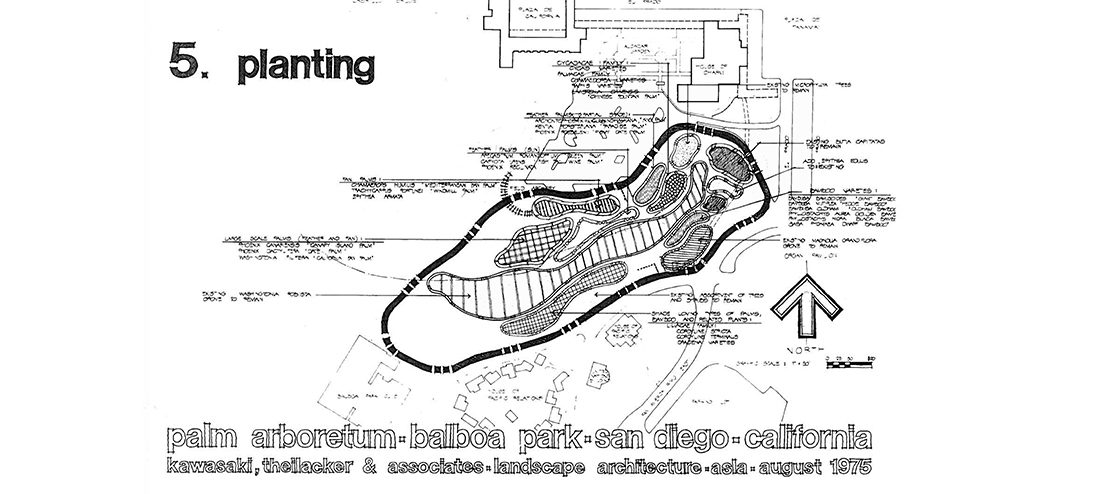KTUA worked with the City of San Diego to develop a master plan for an area that had been designated for palms and palm-like plant materials. The master planning took into consideration the historic value and past character of the site.
During the 1916 Exposition in Balboa Park, pedestrians used this area as a link between the Alcazar Gardens, the California Tower, the museums and the Palisades area. The master plan proposed a new pedestrian bridge to replace the original bridge that was removed sometime after the exposition. Although this main bridge was not built across the canyon, a secondary bridge and stairs were built under the first phase of construction.
The plan also establishes pedestrian access via the canyon slopes with switch-back wooden engawas, thus creating access to the canyon floor while enjoying the beauty of the plants while descending. The engawas were designed to minimize the disruption of the slopes which have many mature palm and ornamental trees, and to give the disabled the opportunity to enjoy the natural beauty of this canyon site.
Palm Canyon is a showcase for more than 50 species of palms and other ornamental trees within a two-acre site. The original group of Mexican fan palms date back to 1912 and were planted under the direction of Kate Sessions. Spectacular Moreton Bay fig trees (Ficus macrophylla) were planted in the mid 1930s, with massive root structures reminiscent of flying buttresses extending down into the canyon. According to the March 14, 1935 edition of the Coronado Eagle and Journal, “A new rustic bridge, built of giant eucalyptus and spruce trees, now spans Palm Canyon in Balboa Park, offering quick access from the Alcazar Garden and the Avenue of Palaces to the palisades section where the Ford exhibit, Ford Music Bowl and other exposition structures will be located. The bridge is sturdy enough to support the weight of a herd of elephants according to the builders, and it offers an unrivaled view of the dense palm canyon in this deep canyon, with the California tower looming in the background.”
More than forty years after construction of the secondary bridge and stairs, and enhancement of the plant materials, Palm Canyon continues to serve as a critical pedestrian link between Alcazar Garden and the Organ Pavilion, as well as an outdoor classroom for visitors interested in learning about the unique palm and tree species in the canyon. It is also the site for many wedding photos, and is often used by the Girl Scouts for their “bridging” ceremony from Brownies to Juniors. The wooden structures, while requiring routine maintenance, have withstood the test of time, and attract hundreds of daily visitors stop to enjoy the view and explore the historic canyon. The structures touch lightly on the ground to enhance the natural beauty of the canyon and the design of the structures reflects the character of the original “Rustic Bridge”.
Back to top


